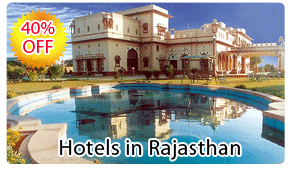
- perfectholidaytravel@hotmail.com
- +91 9811138106 / 9811 5939 89
Kumbhalgarh Sanctuary

The bird life at Kumbhalgarh is also gratifying. The normally shy and untrusted grey jungle fowl can be spotted here. Peacocks and Doves can be sighted regularly feeding on grains scattered by the jungle guards. Bird like the red spur owls, Parakeets, golden Oriole, grey Pigeons, Bulbul, Dove and white breasted kingfisher can also be seen near the water holes. Kumbhalgarh's natural beauty is attracting many tourists and especially for its accessibility from Udaipur, which is 100 Kms from here.
Foot tracking and horse safari organised by local tour operators are proving to be very popular. A typical safari route enters the sanctuary from the Kumbhalgarh Fort and cutting across the sanctuary it reaches Ghanerao, and then borders an old abandoned road. On this road, one can sight Chinkaras, Neelgais, four horned Antelope and many birds.
Built in the 15th century by Rana Kumbha of Chittaurgarh, Kumbhalgarh is Rajasthan's highest fort and its most formidable. It its air is rife with medieval tales of intrigue and treachery, it is because its history is characterised by some of the pivotal points that characterised the Sisodia dynasty.
The hilly tracts of this area are best savoured from Aodhi one of Rajasthan's most charming getaways.
Is located in the most rugged of the Aravali in Pali, Rajsamand and Udaipur districts of Rajasthan. It takes name after the impressive historic fort of Kumbhalgarh, which come into view over the Park. It is 578 sq Kms in area and at an altitude of 500 to 1,300m.
It is home to a very large variety of wild life, some of which are highly endangered species. The wild life includes wolf, leopards, sloth bear, hyena, jackal, jungle cat, smabhar, nilgai, chaisingh (the four horned antelope), chinkara and hare.










